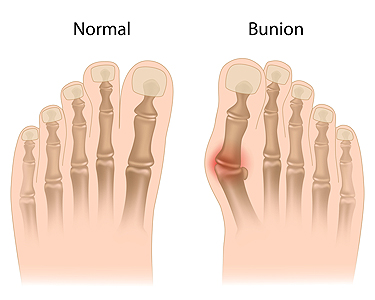Connect With Us
Blog
Understanding What Bunions Are

A bunion, medically known as hallux valgus, is a common foot deformity that affects the joint at the base of the big toe. It appears as a bony bump on the side of the foot, causing the big toe to bend inward toward the lesser toes. Bunions develop gradually over time due to various factors, including genetics, foot structure, and footwear choices. Wearing tight, narrow shoes and high heels can accelerate the condition by putting pressure on the toes and forcing them out of alignment. As the bunion progresses, individuals may experience pain, swelling, redness, and restricted movement in the affected toe. Bunions can interfere with daily activities and affect overall foot function. It is suggested that you seek professional advice from a podiatrist for an exam. This medically trained foot doctor can offer treatment options that can help to alleviate symptoms and prevent complications.
If you are suffering from bunion pain, contact Cary Golub, DPM of New York. Our doctor can provide the care you need to keep you pain-free and on your feet.
What Is a Bunion?
Bunions are painful bony bumps that usually develop on the inside of the foot at the joint of the big toe. As the deformity increases over time, it may become painful to walk and wear shoes. Women are more likely to exacerbate existing bunions since they often wear tight, narrow shoes that shift their toes together. Bunion pain can be relieved by wearing wider shoes with enough room for the toes.
Causes
- Genetics – some people inherit feet that are more prone to bunion development
- Inflammatory Conditions - rheumatoid arthritis and polio may cause bunion development
Symptoms
- Redness and inflammation
- Pain and tenderness
- Callus or corns on the bump
- Restricted motion in the big toe
In order to diagnose your bunion, your podiatrist may ask about your medical history, symptoms, and general health. Your doctor might also order an x-ray to take a closer look at your feet. Nonsurgical treatment options include orthotics, padding, icing, changes in footwear, and medication. If nonsurgical treatments don’t alleviate your bunion pain, surgery may be necessary.
If you have any questions, please feel free to contact our offices located in Williston Park, and Long Beach, NY . We offer the newest diagnostic and treatment technologies for all your foot care needs.
